Peruvian Amazon
This baby capuchin monkey followed close behind its mother in the trees near the Los Amigos research station.
The Peruvian Amazon is a special part of the world’s largest rainforest and the wildlife you can see there is truly astonishing.
Puerto Maldonado is an inland port, on the eastern side of Peru, up and over the Andes from the Pacific Ocean. It’s a large town, which I hesitate to call a city. Puerto (as the locals call it) is the capital of the Madre de Dios region of Peru, named after the Madre de Dios River that flows around the town. The Tambopata River meets the Madre de Dios at the port, where long river boats can tie up and fill up on gas. The Interoceanic Highway that links the Pacific to the Atlantic crosses a bridge just north of the confluence.
Most visitors to Puerto book a trip to a lodge in the jungle before arrival and are whisked from the airport to the river and lodge. This completely bypasses the town and keeps all tourism income at the lodges. Puerto suffers from a chicken and egg dilemma. Few tourists stay in town because there’s not much to do and the hotels and restaurants are quite basic. However, it’s hard to get the place to invest in tourist attractions and improved lodging and restaurants without any tourism capital.
Whether you stay in Puerto Maldonado and go on day trips or whether you go directly from the airport to a lodge in the forest, you’ll have plenty of opportunities to see wildlife. Below are some of what I spotted on my trip to Puerto, along with where I saw them.
Make a reservation in the ACCA page to visit Los Amigos as a tourist, scientist, student or volunteer.
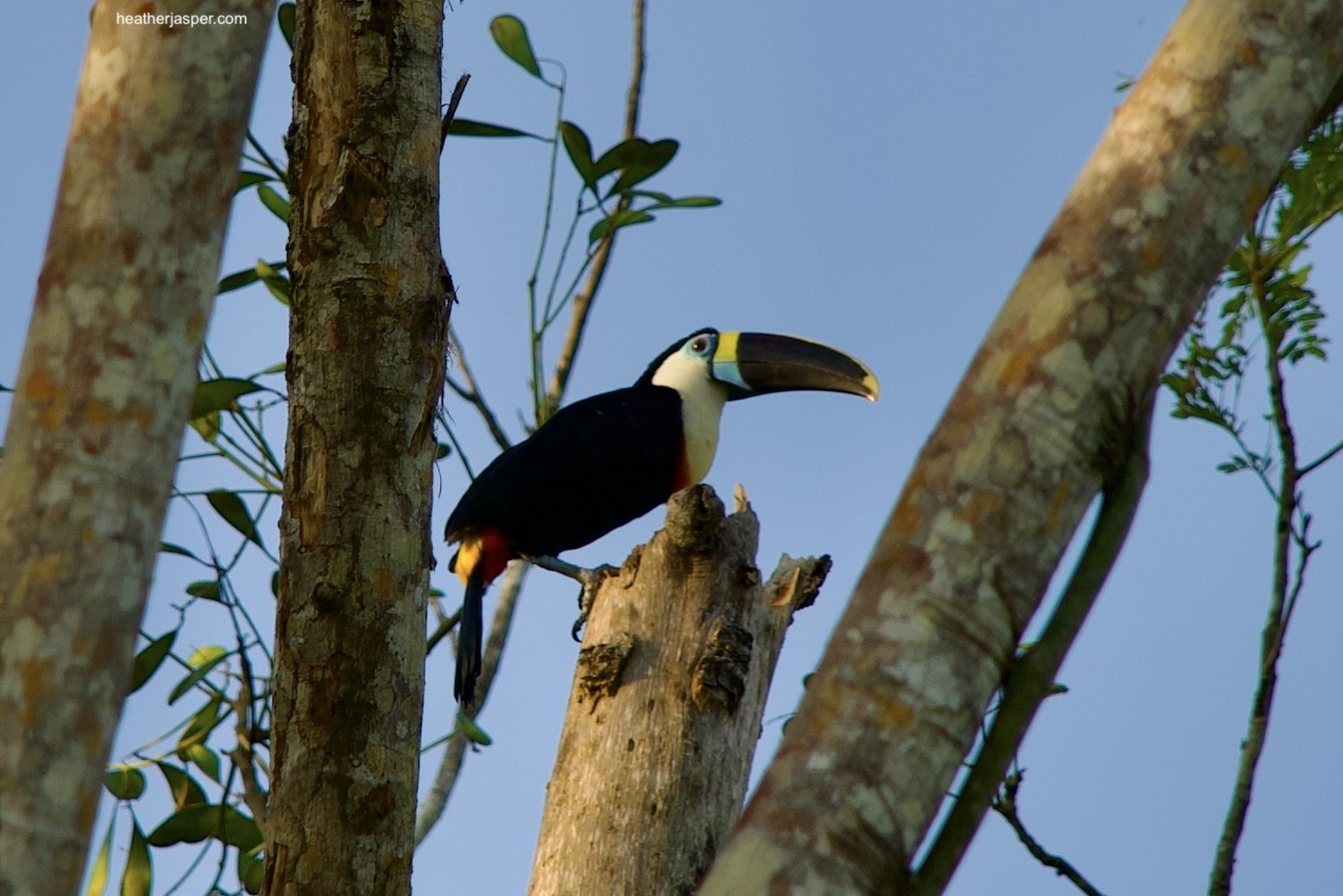


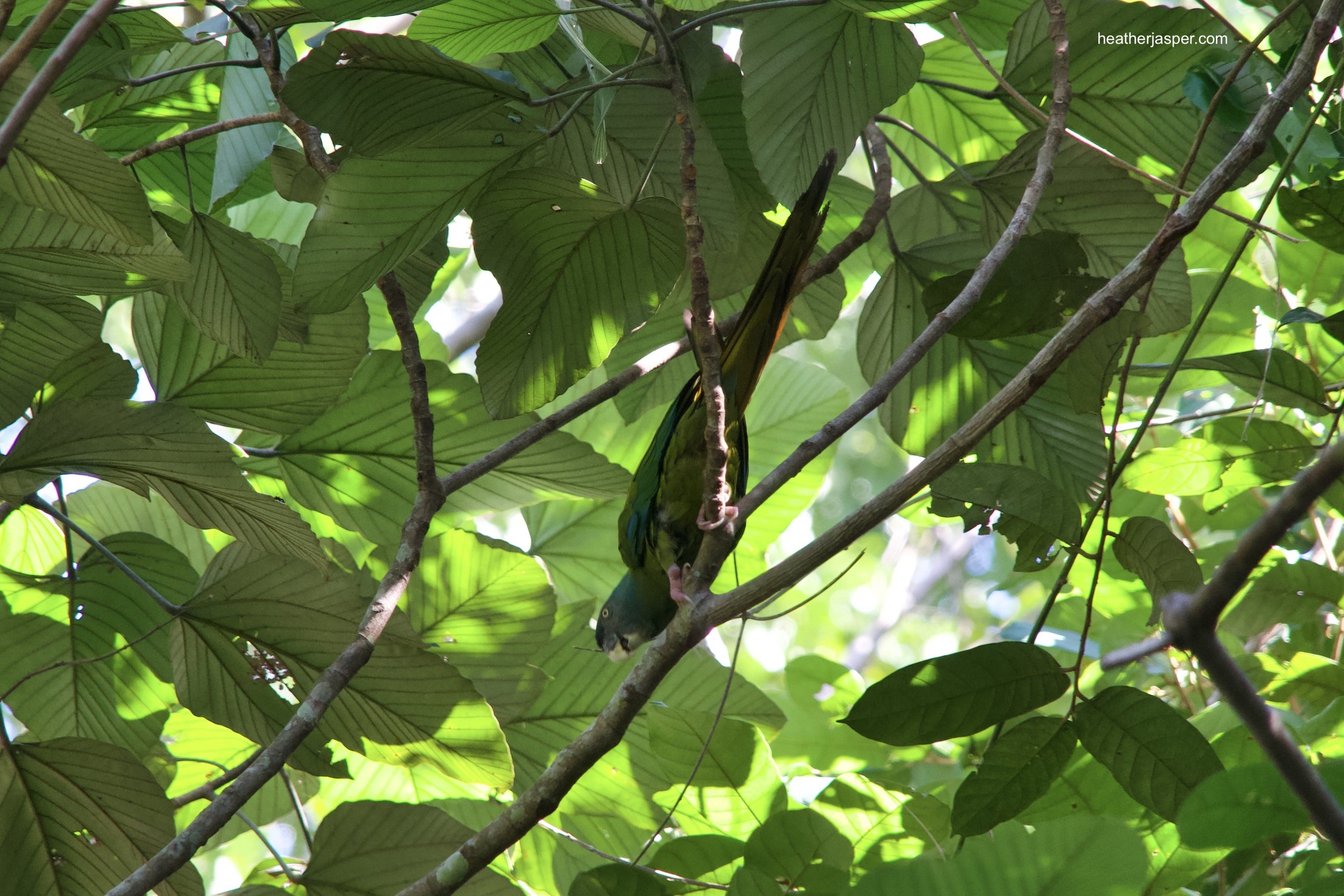
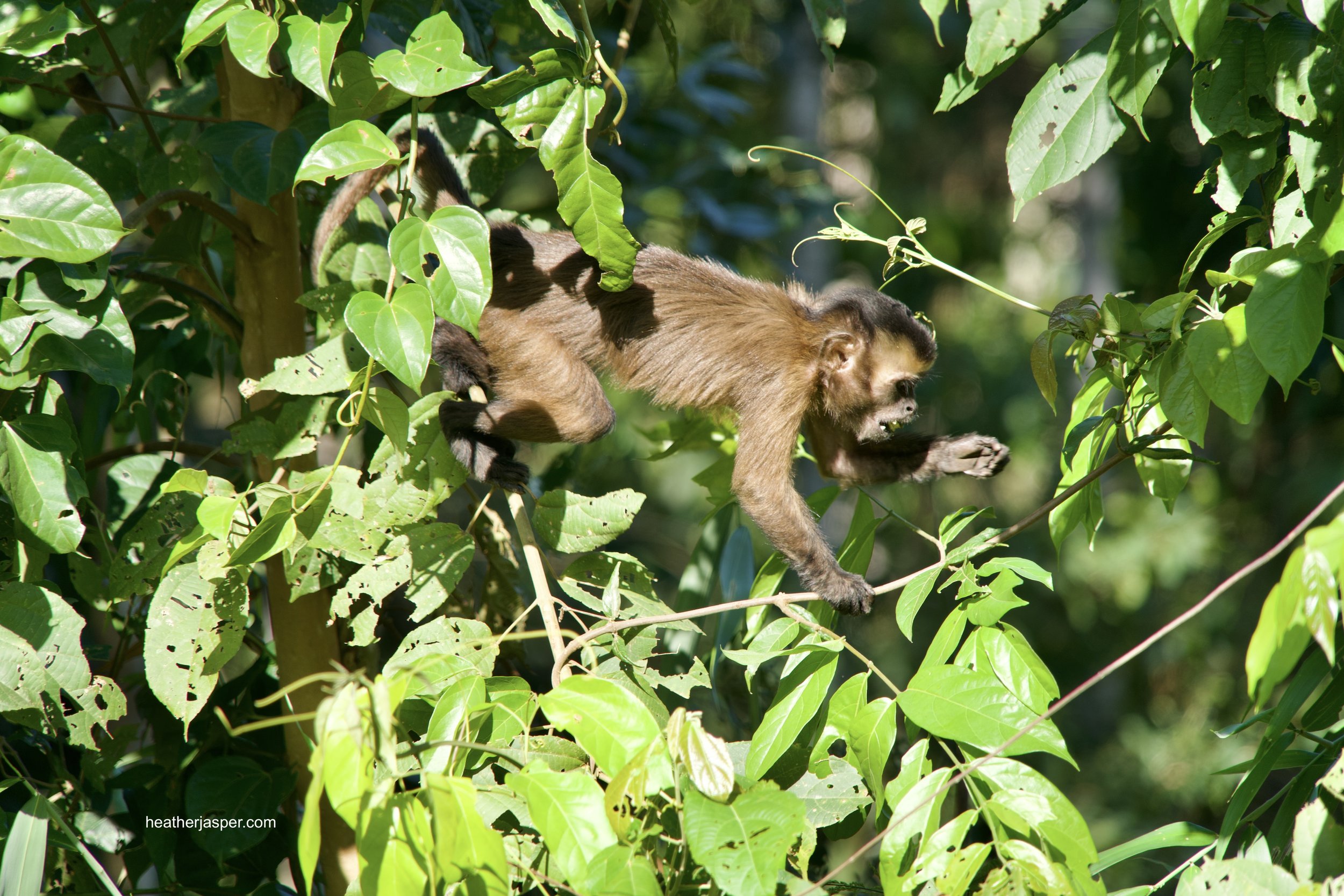
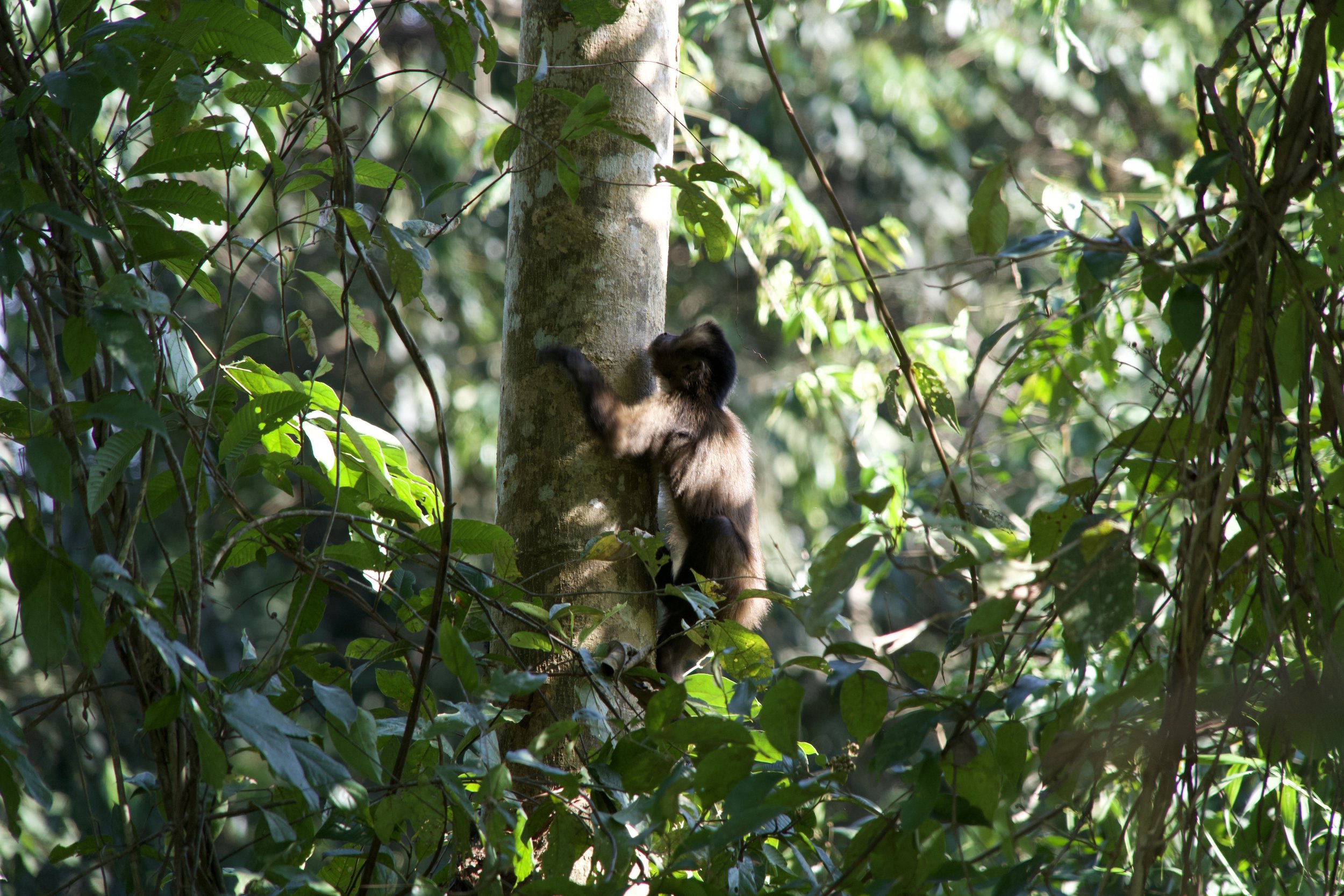
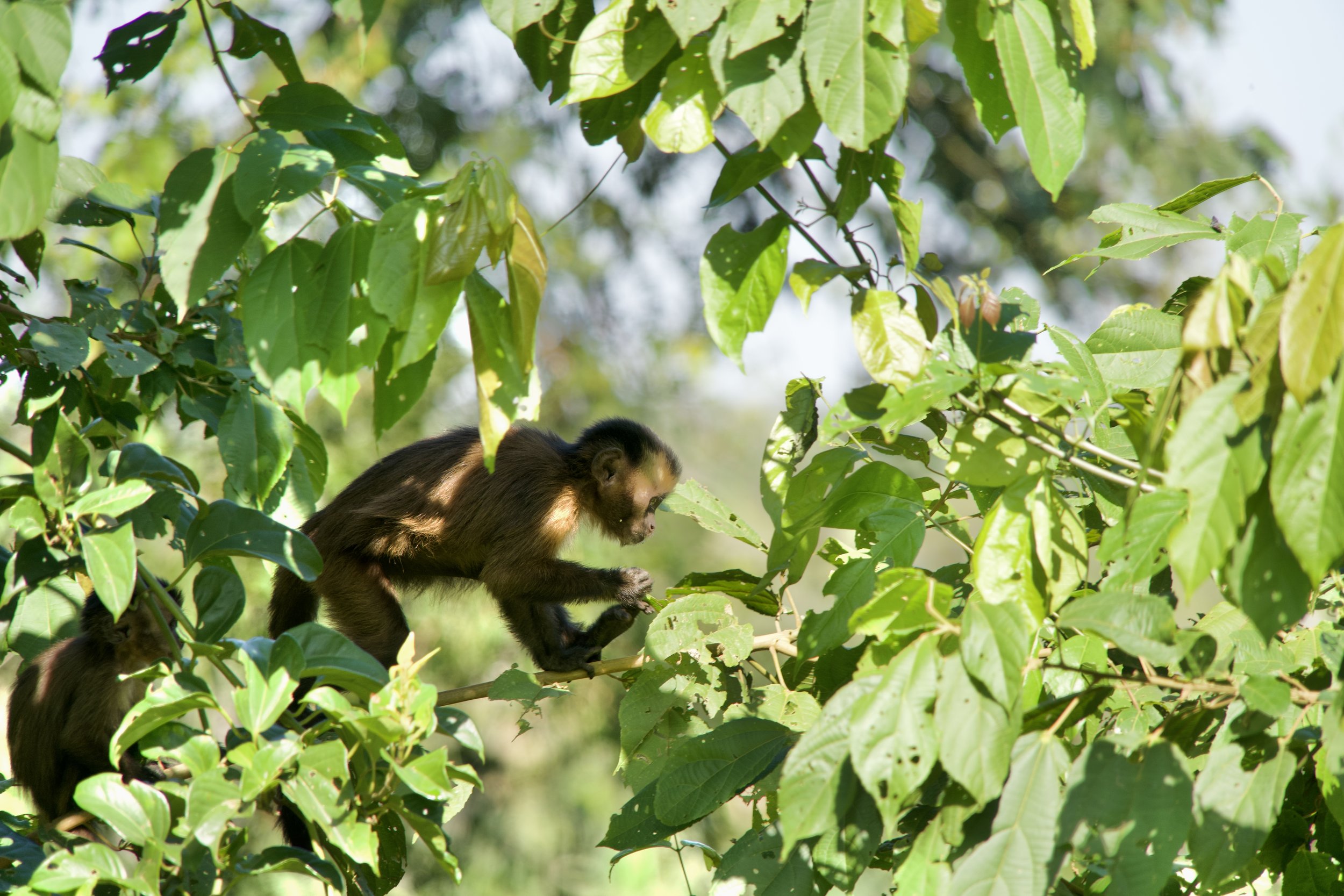
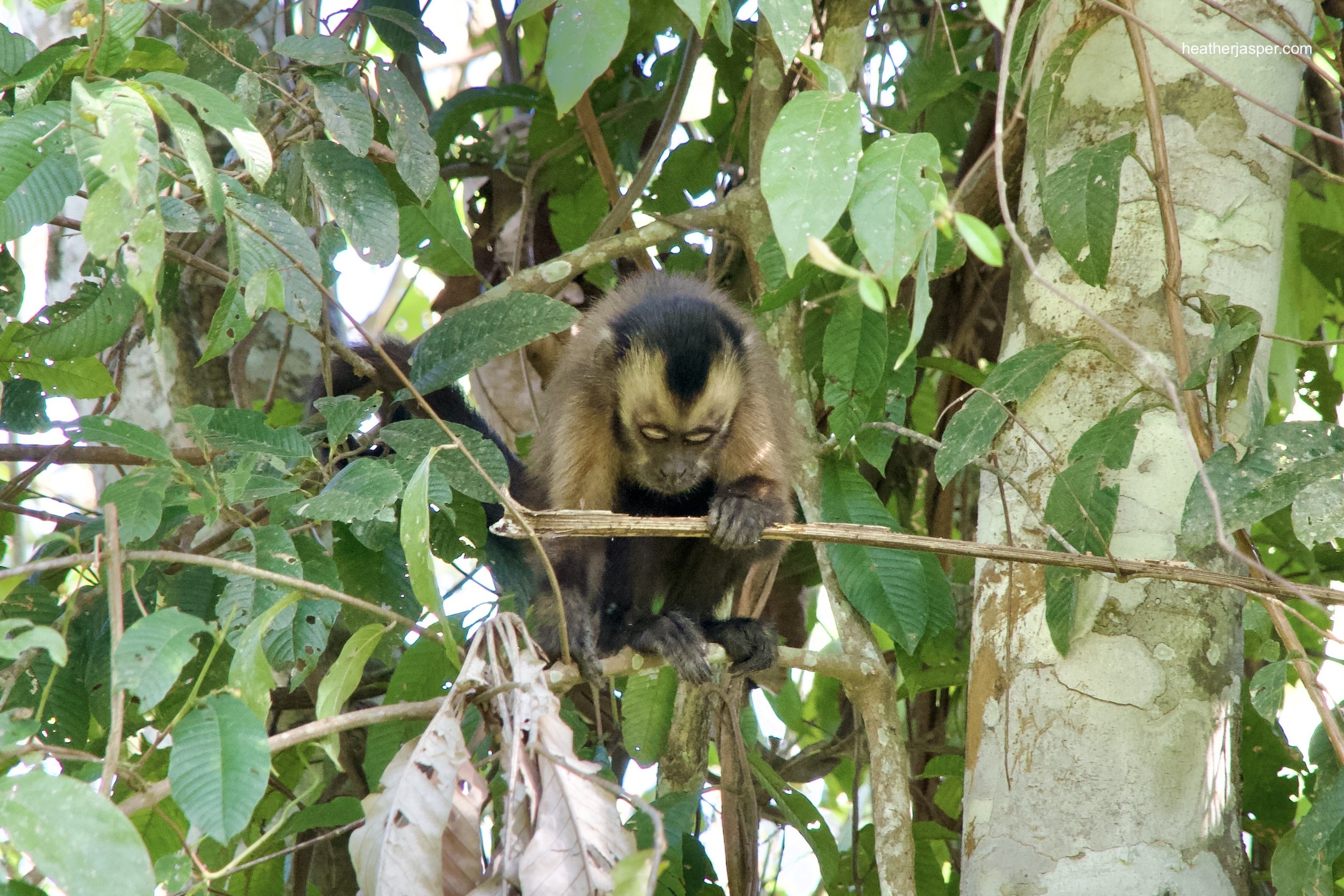
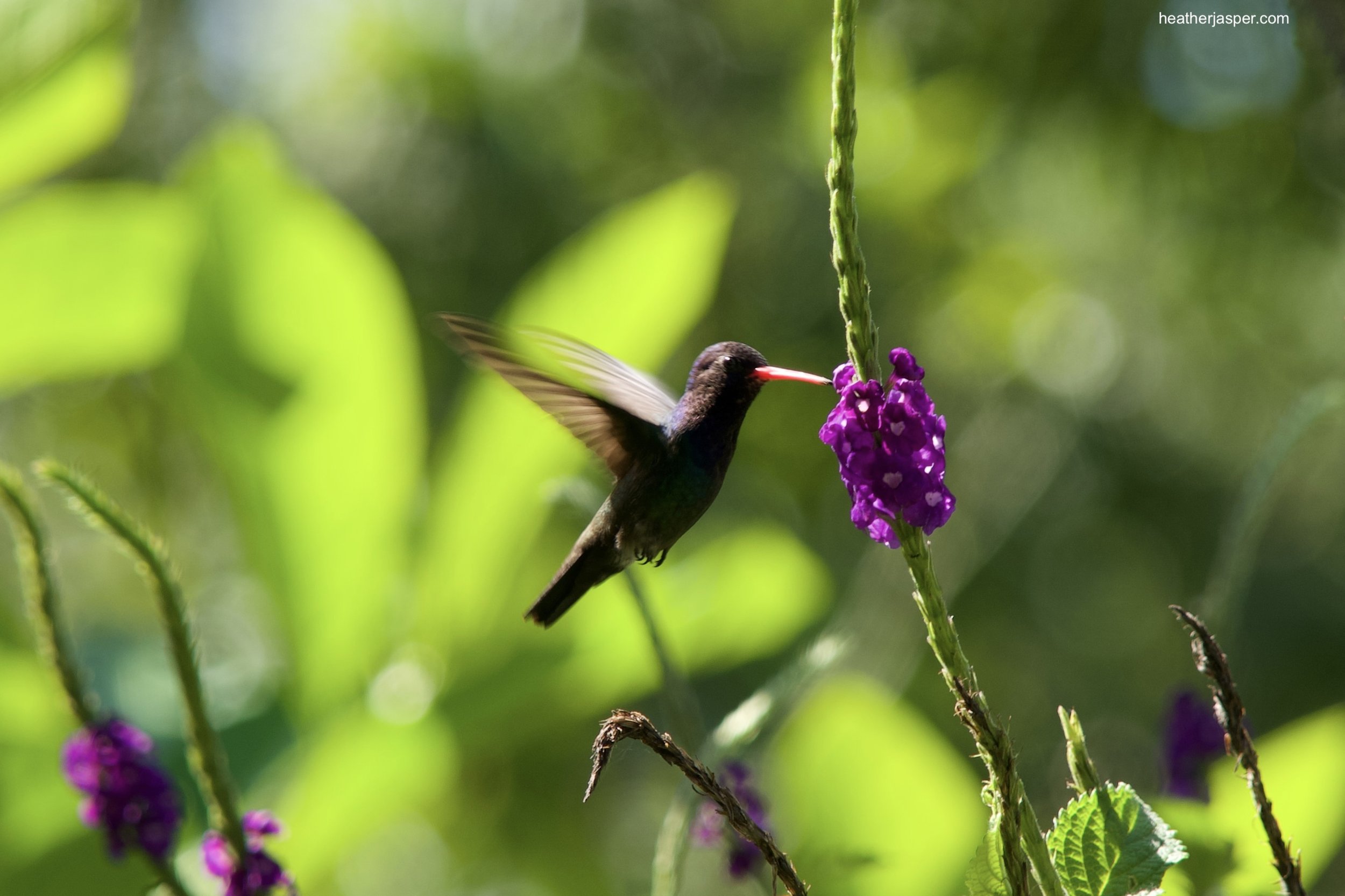


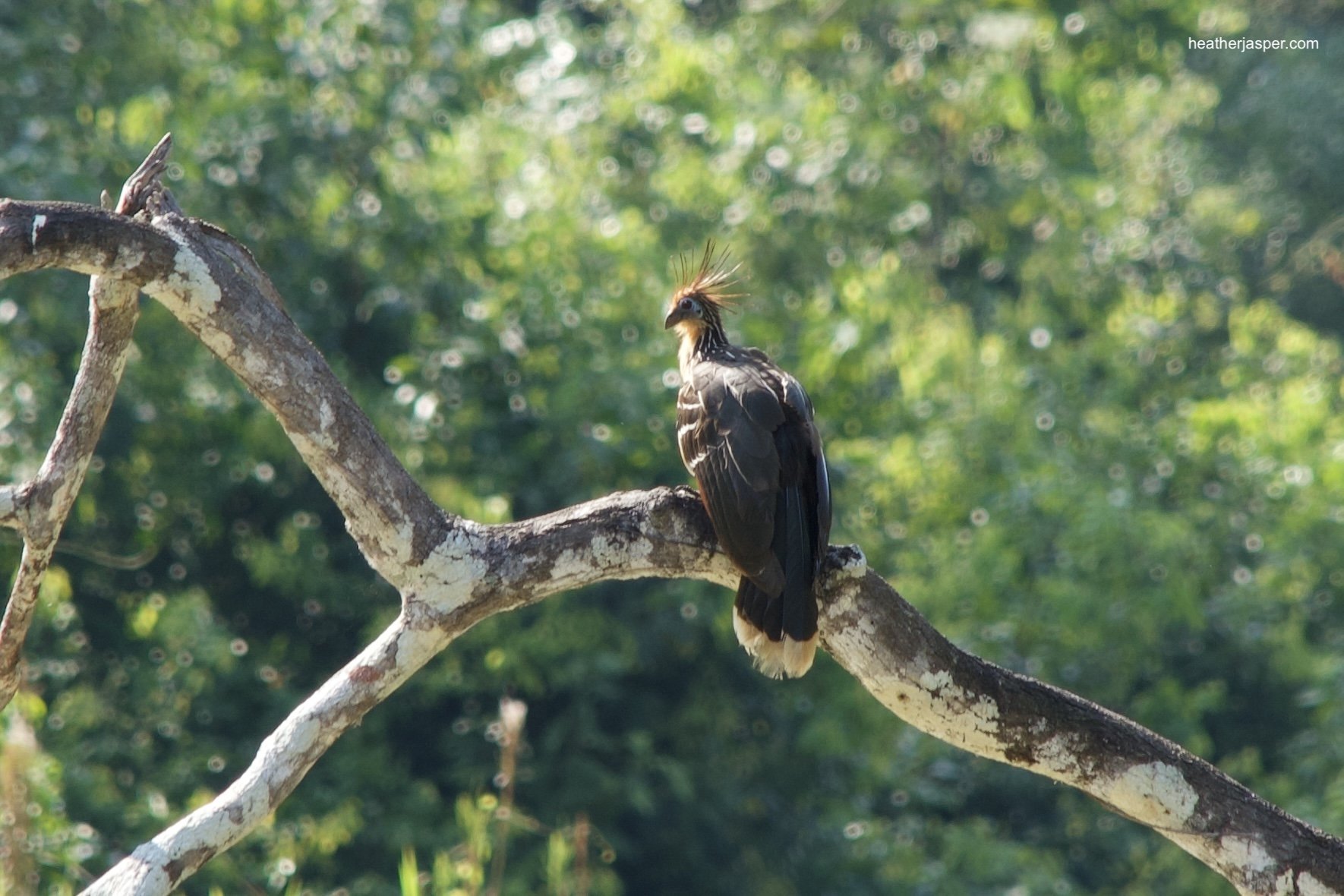
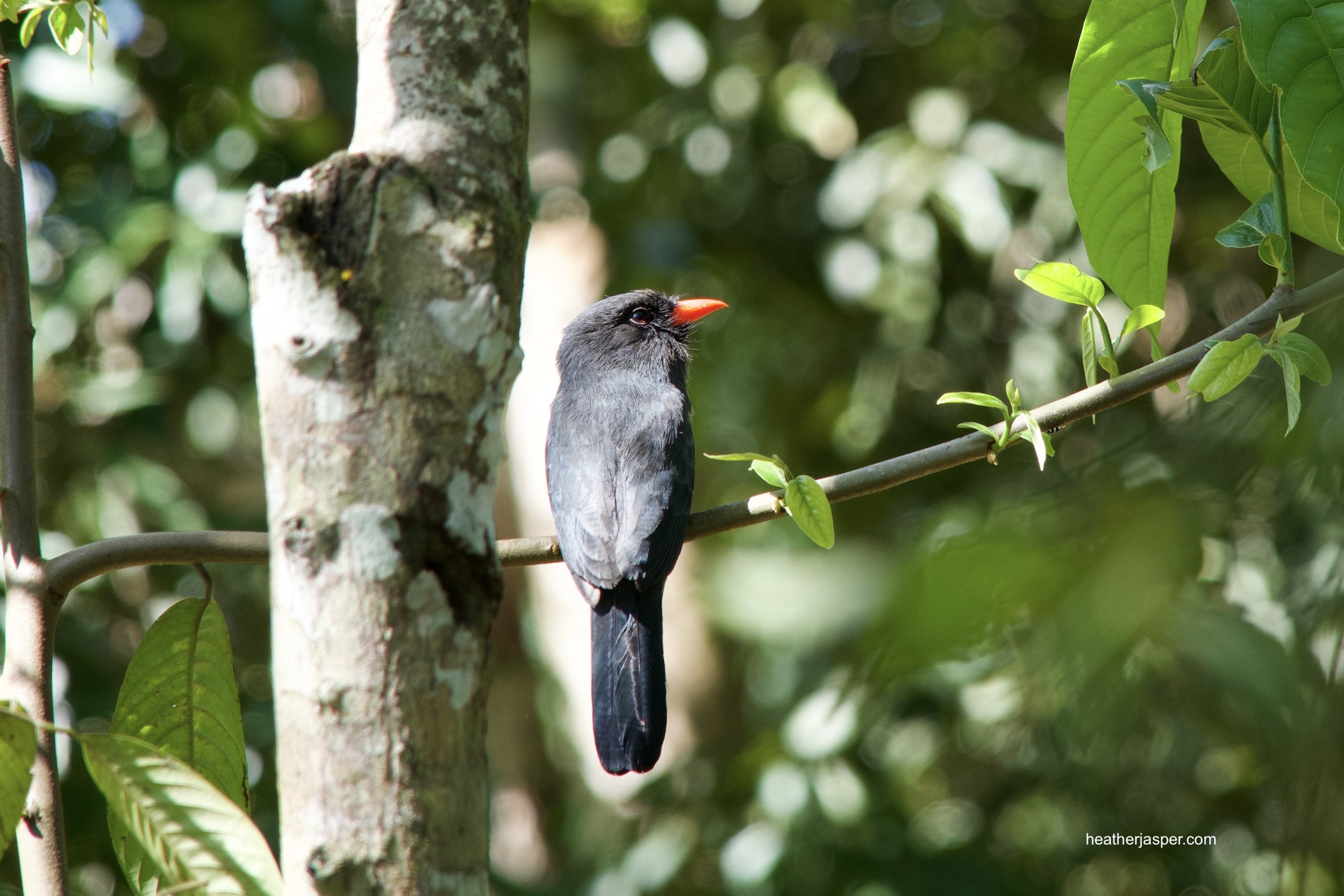
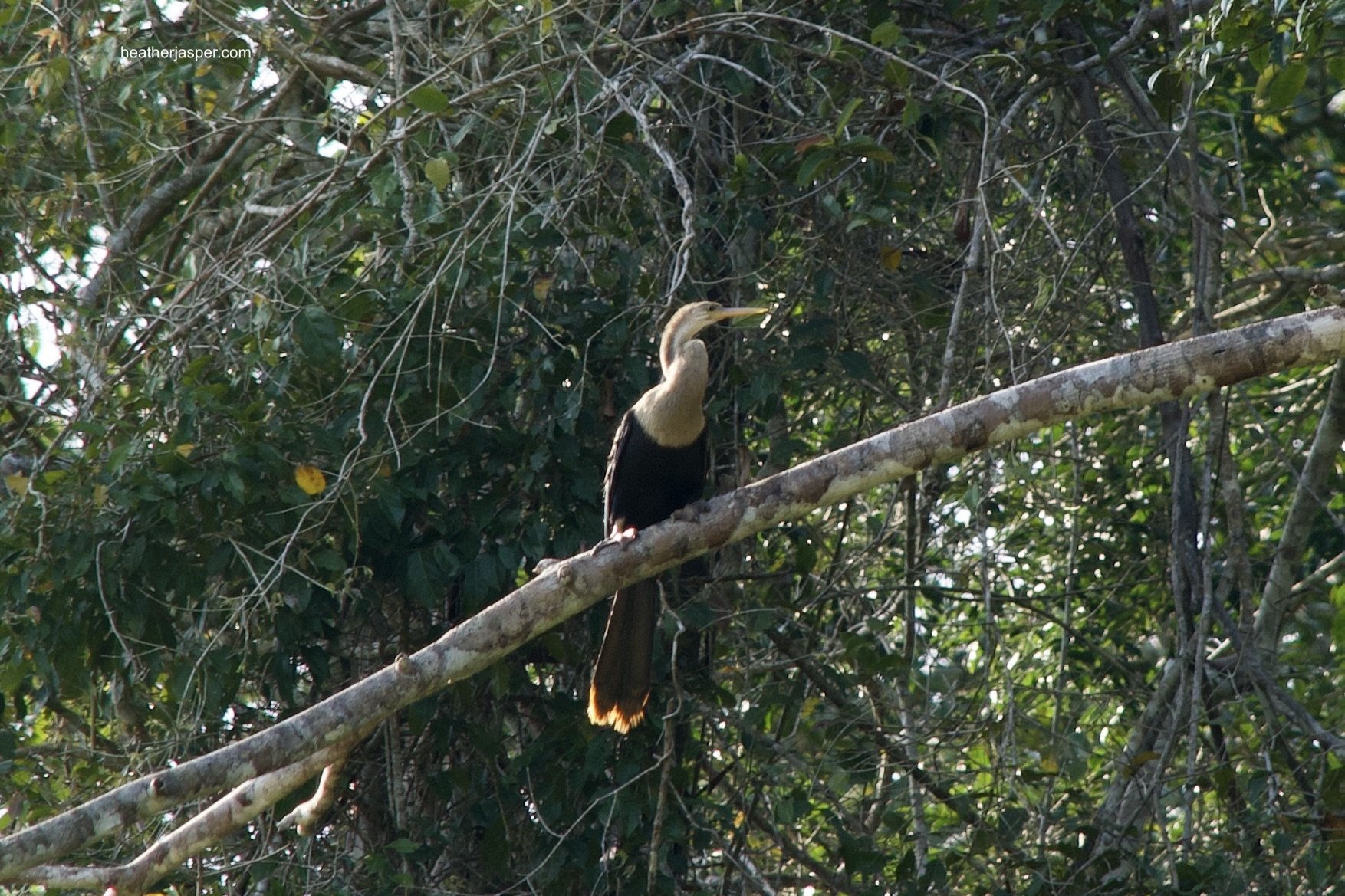
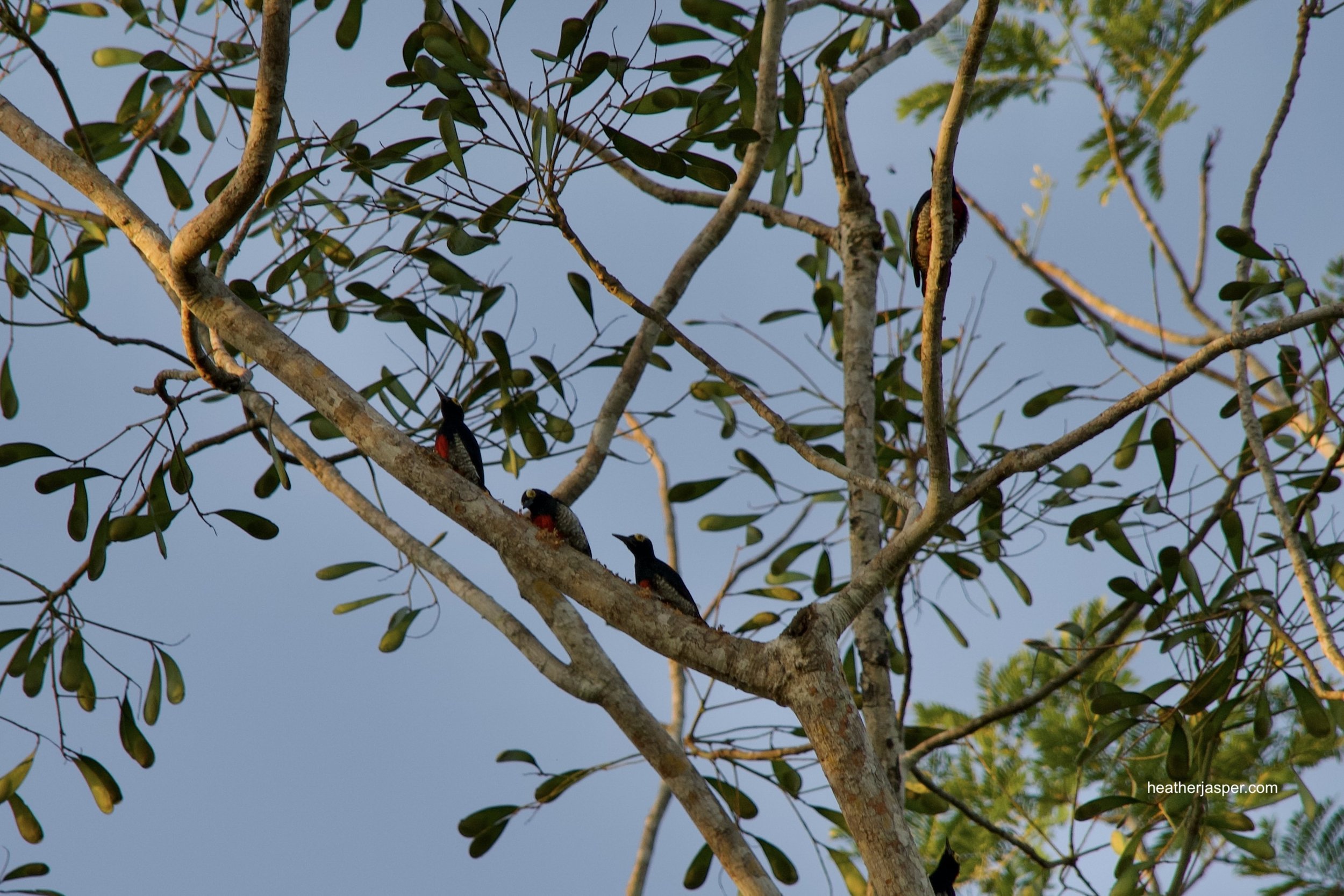
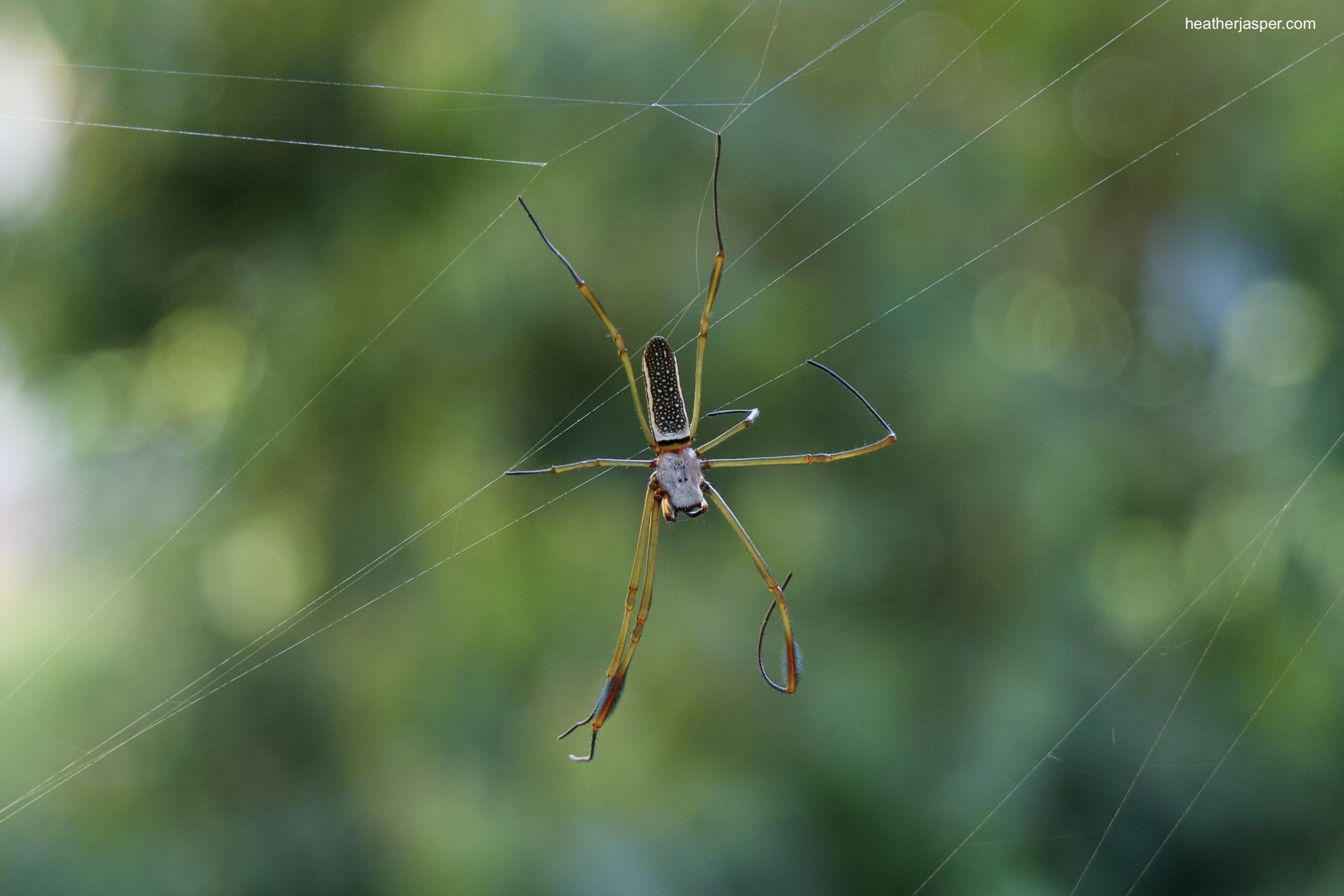
The Los Amigos research station is one of three biological research stations owned by non-profit Conservación Amazónica.
Named after the Los Amigos river, part of the land was bought by Conservación Amazónica (ACCA) and part is a conservation concession from the Peruvian government. You can see most of the species above from the comfort of your cabin porch. Venture onto any of the 40 trails that snake through the forest and you’ll see even more. Above are several photos of capuchin monkeys because I saw them everywhere. I also saw several species of macaws and parrots.
The hoatzin is certainly the strangest creature I saw. It’s a ruminant bird, which means it digests plants like a cow. Hoatzin chicks have claws on their wings so they can climb up trees, though they must fall or glide down. The bird smells terrible, so its only predator is caiman, who lunge up out of the water to catch them. Perhaps this is what has helped it survive, relatively unchanged, for millions of years.
Not pictured, other birds I saw were: Rufous Motmot, Ringed Kingfisher, Bluish-fronted Jacamar, Little Woodpecker, Red-necked Woodpecker, Vermillion Flycatcher, Violaceous Jay, Purplish Jay, Russet-backed Oropendola, Yellow-rumped Cacique, Great Tinamou, Undulated Tinamou, Neotropic Cormorant, Roadside Hawk, Scarlet Macaw, Ferruginous Pygmey-Owl, Common Pauraque, White-winged Swallow and Tropical Kingbird. There were many more that I caught a flash of high in the canopy and wasn’t able to identify.
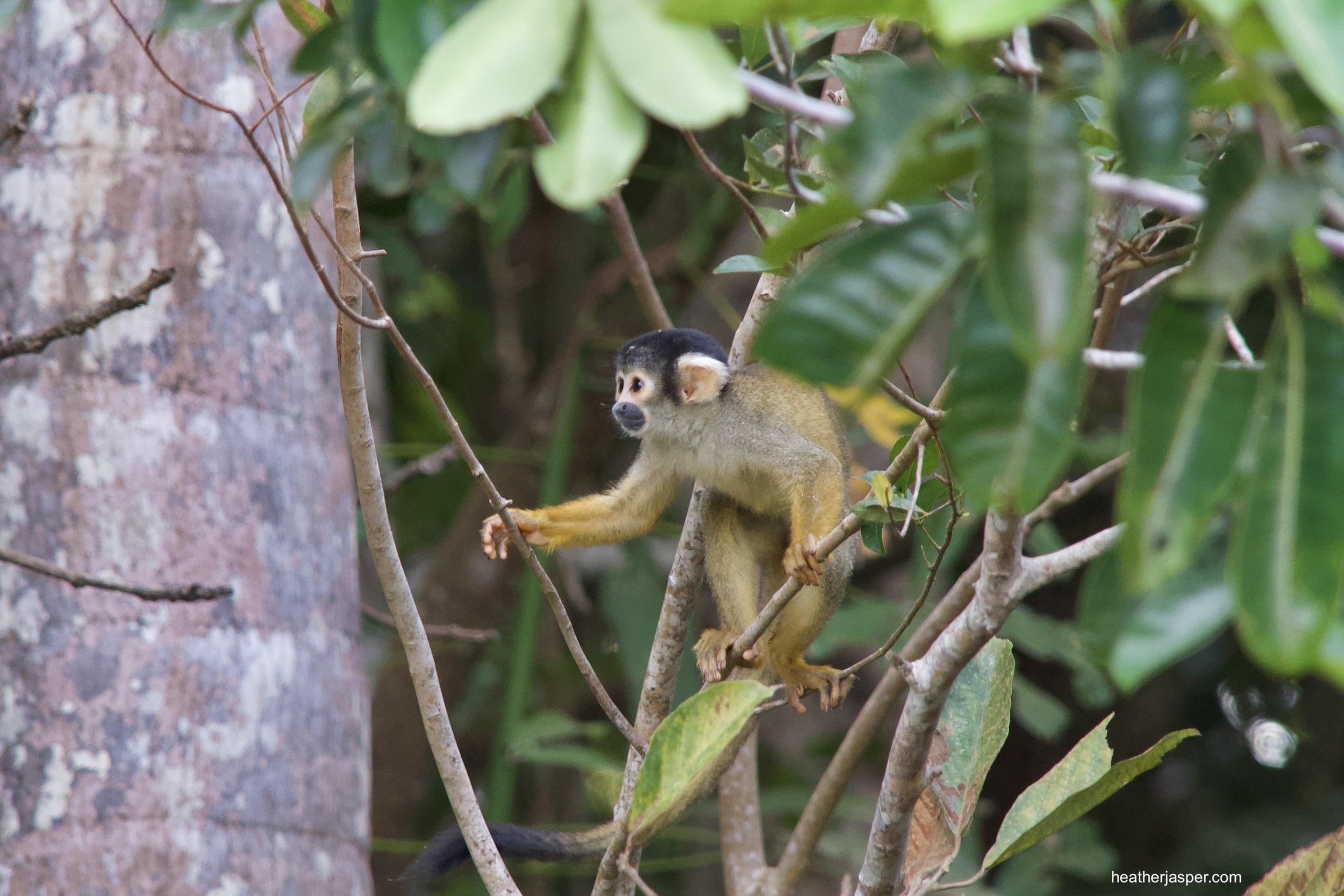
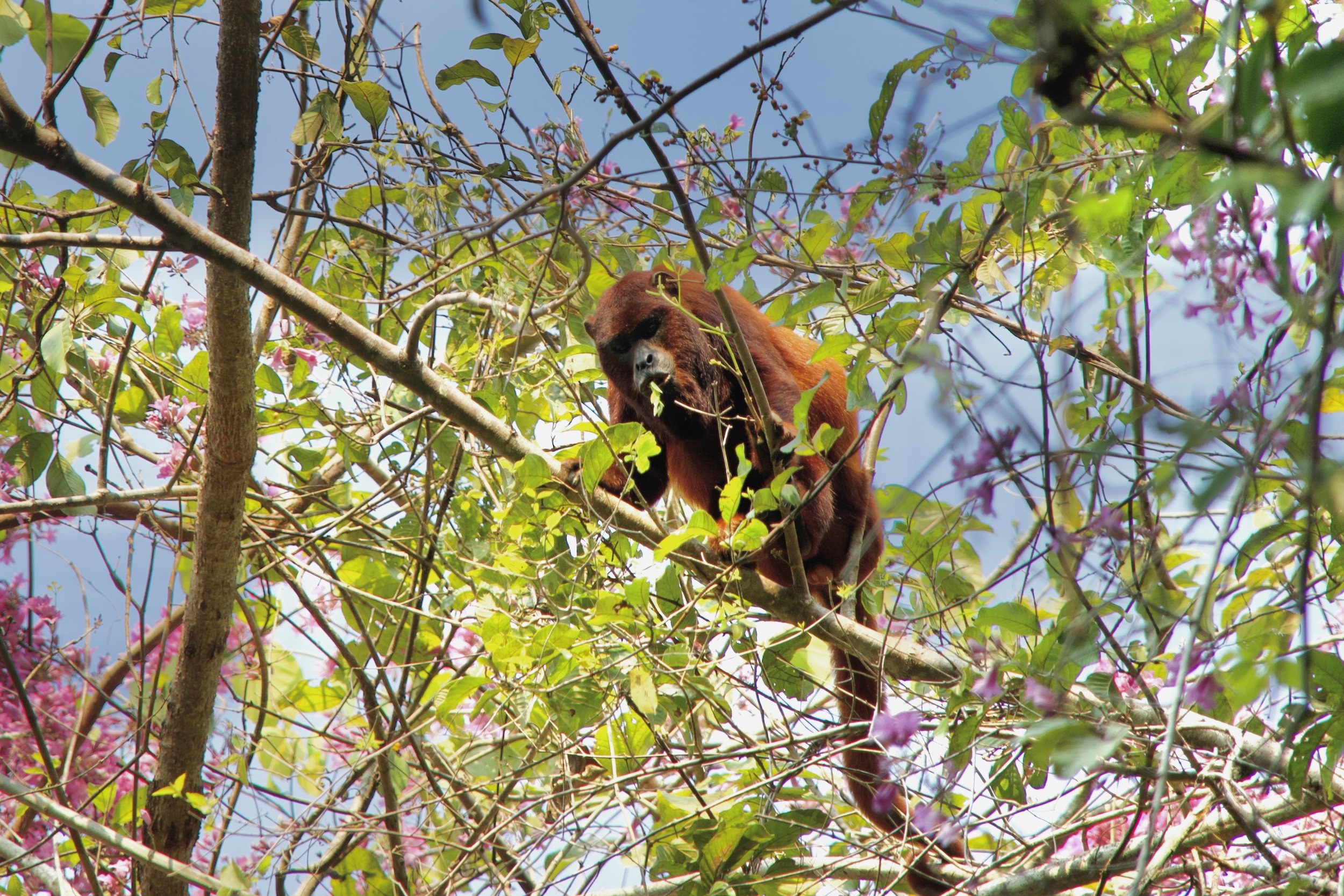
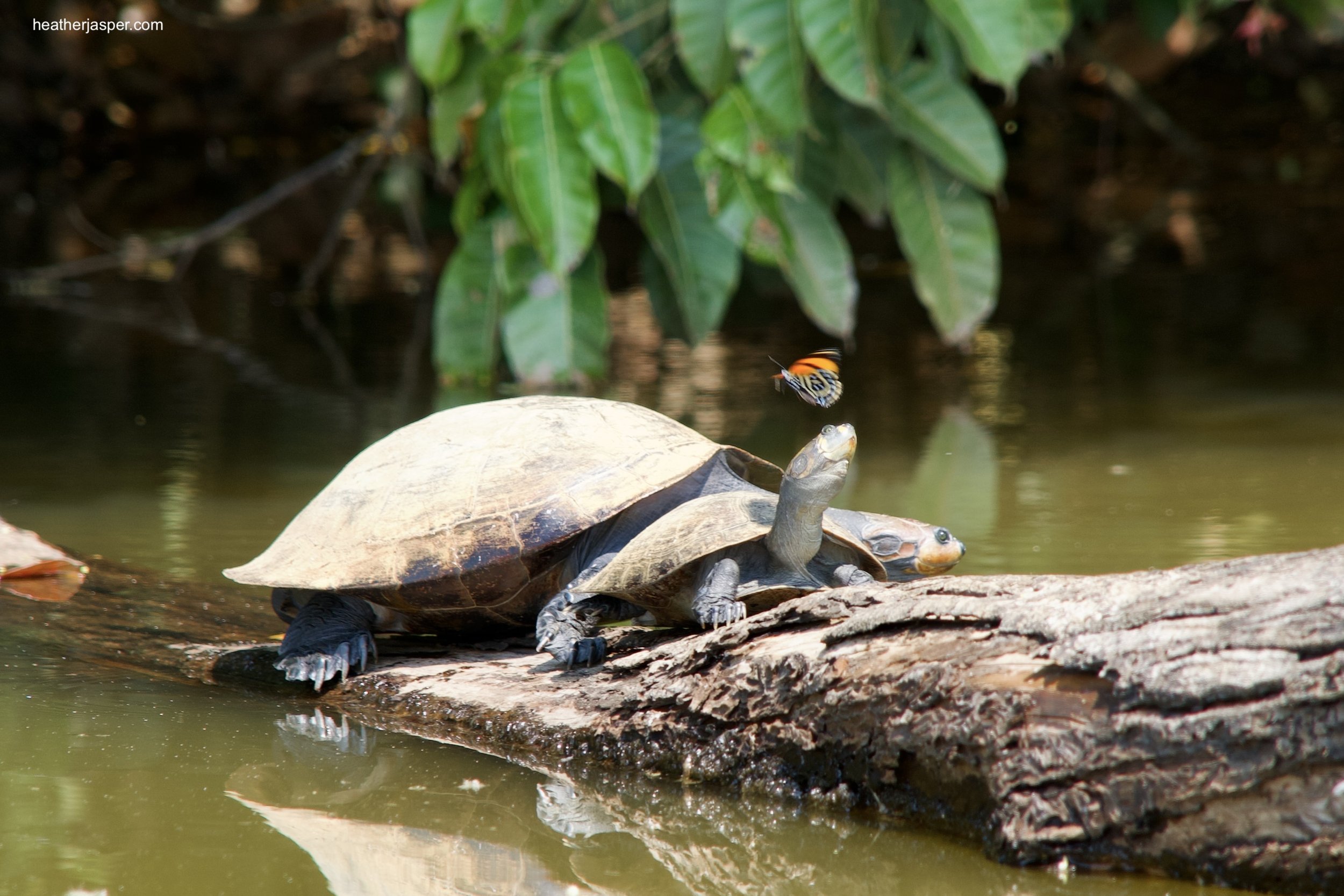

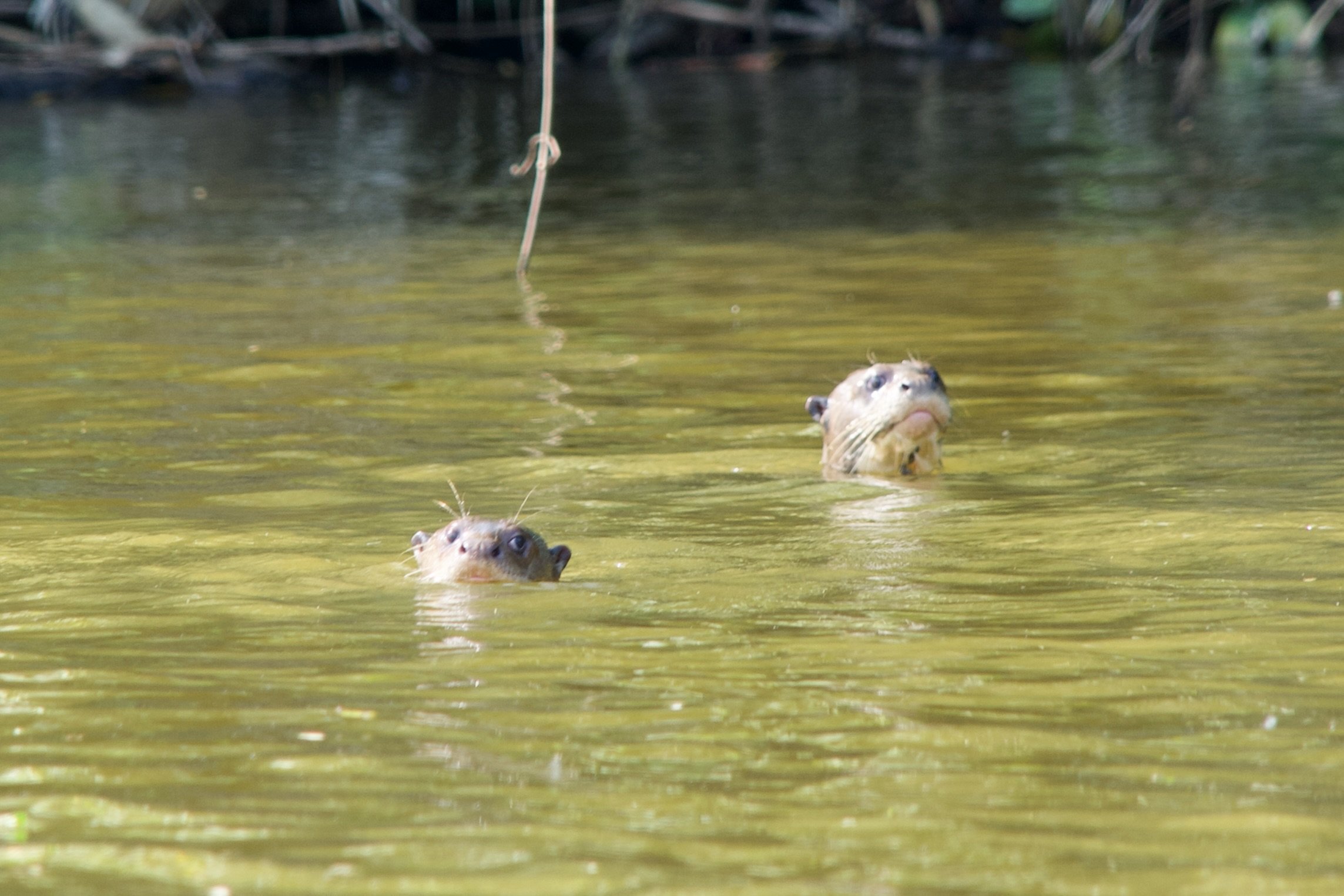

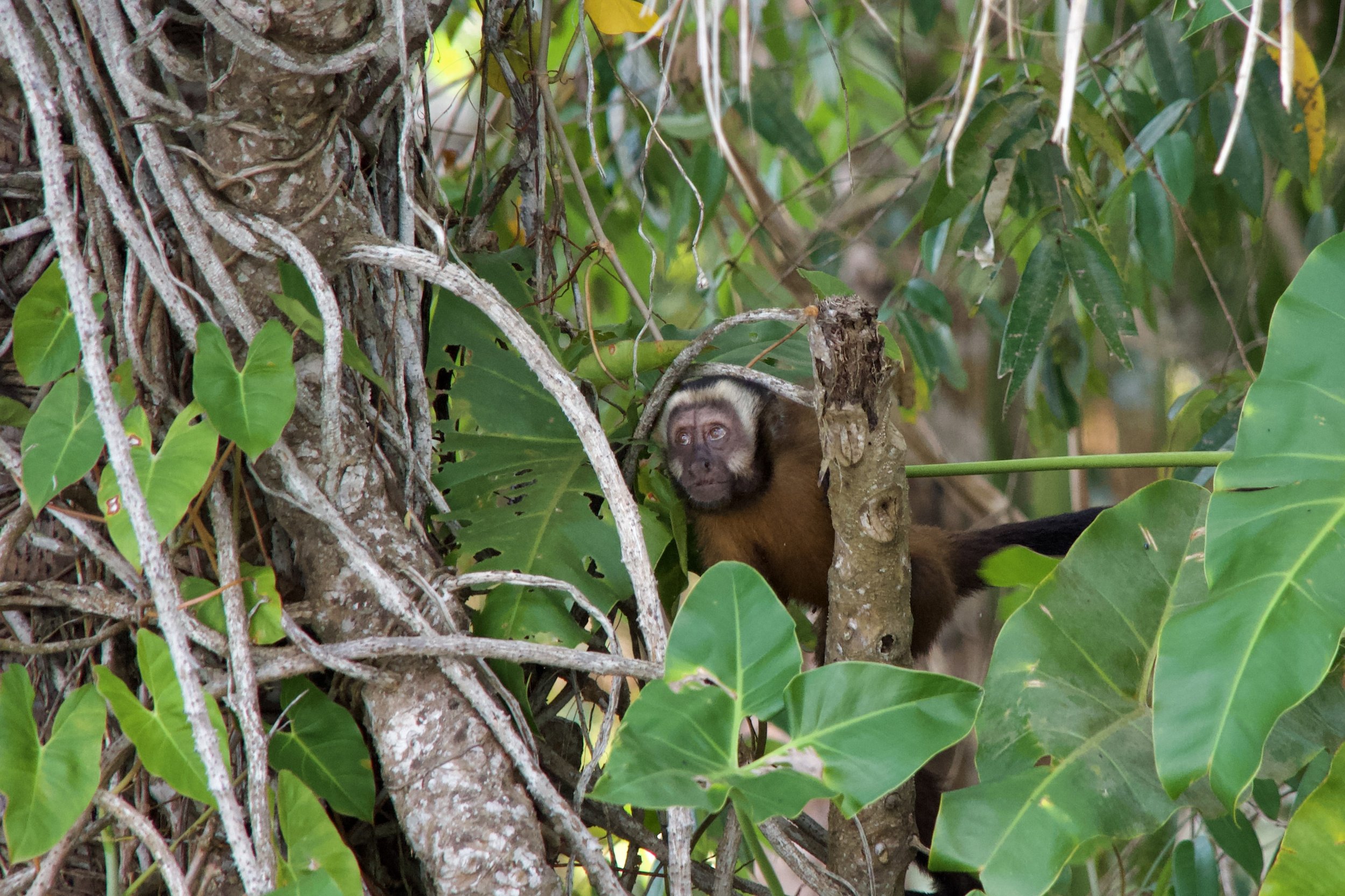
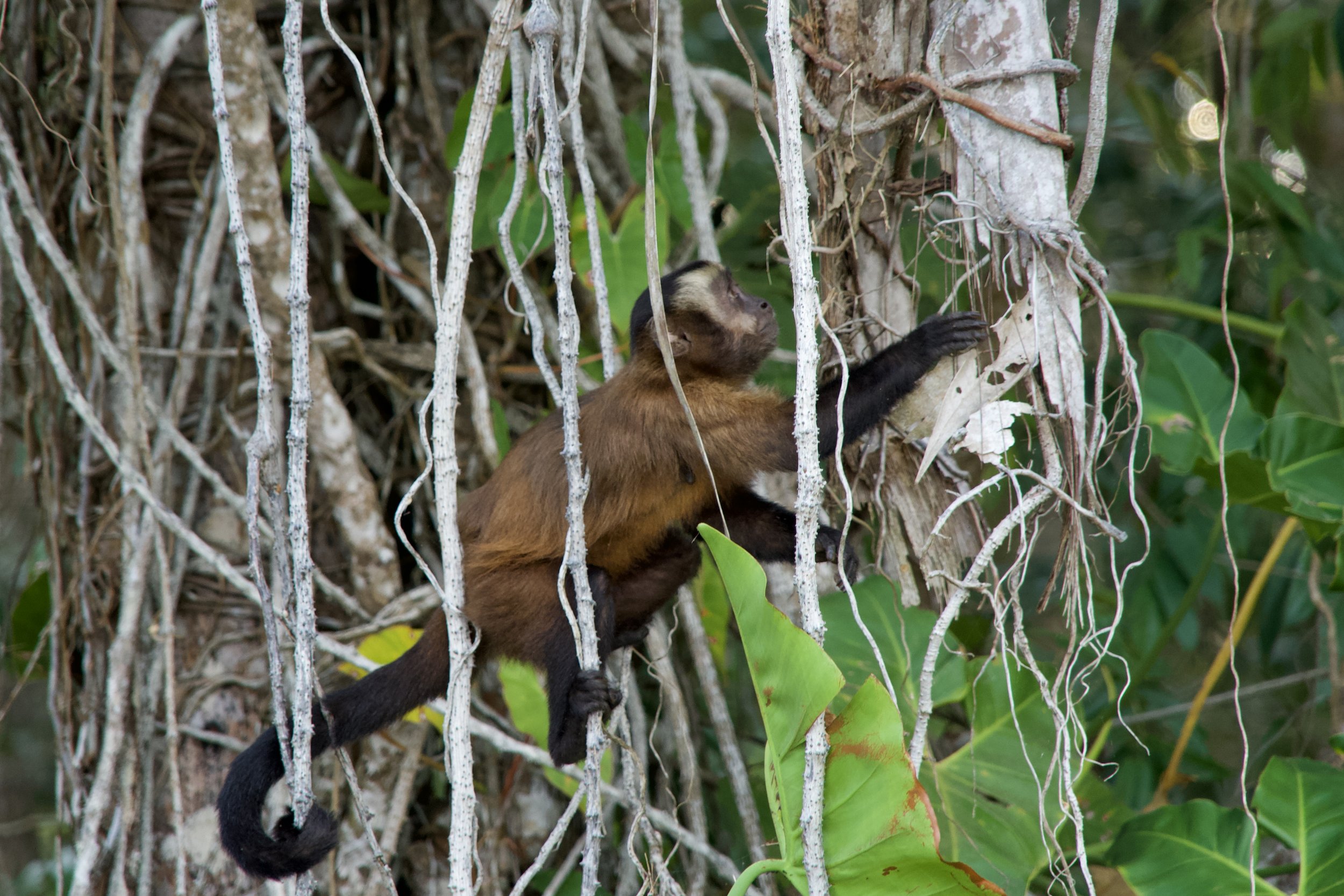
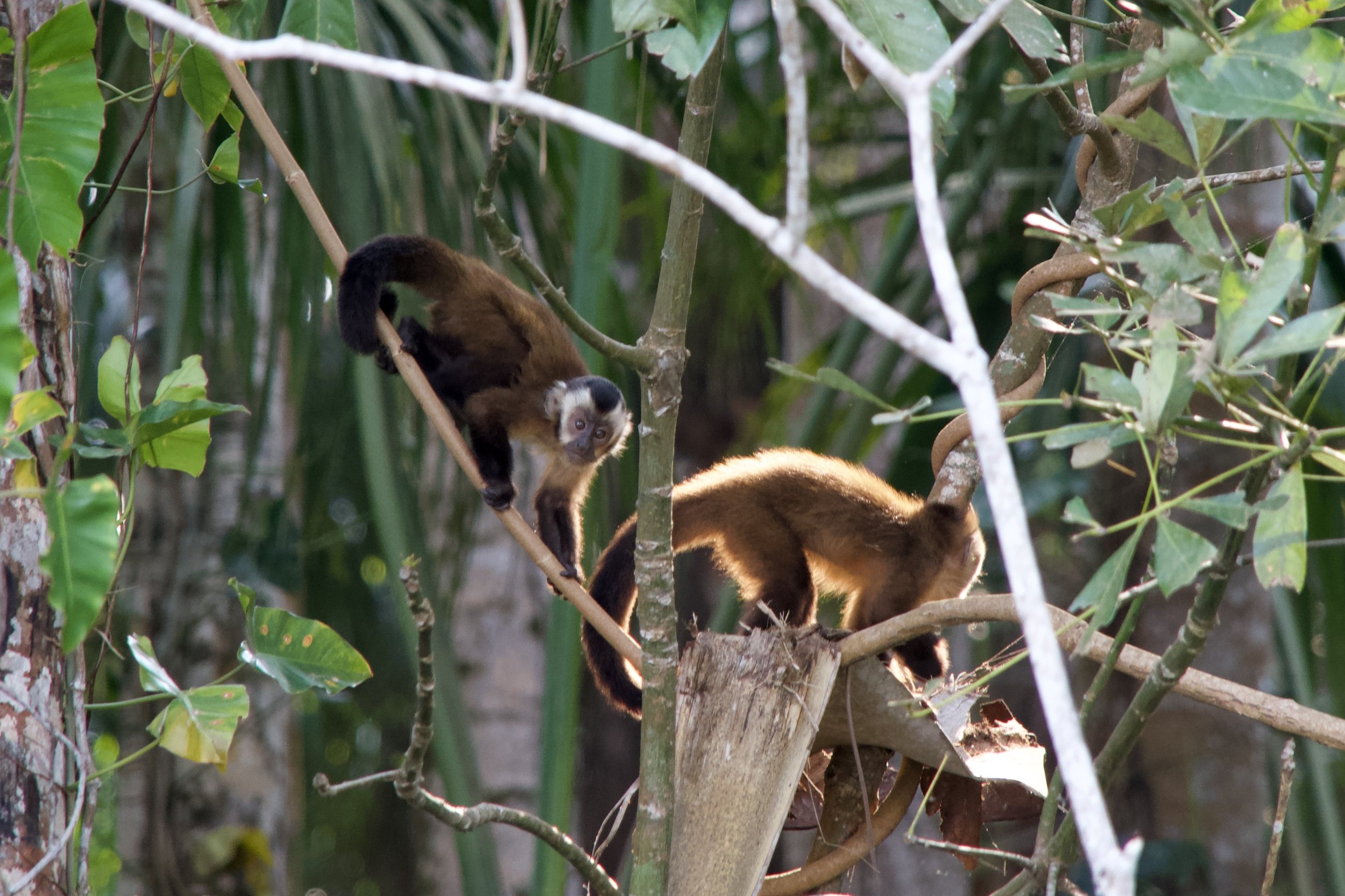
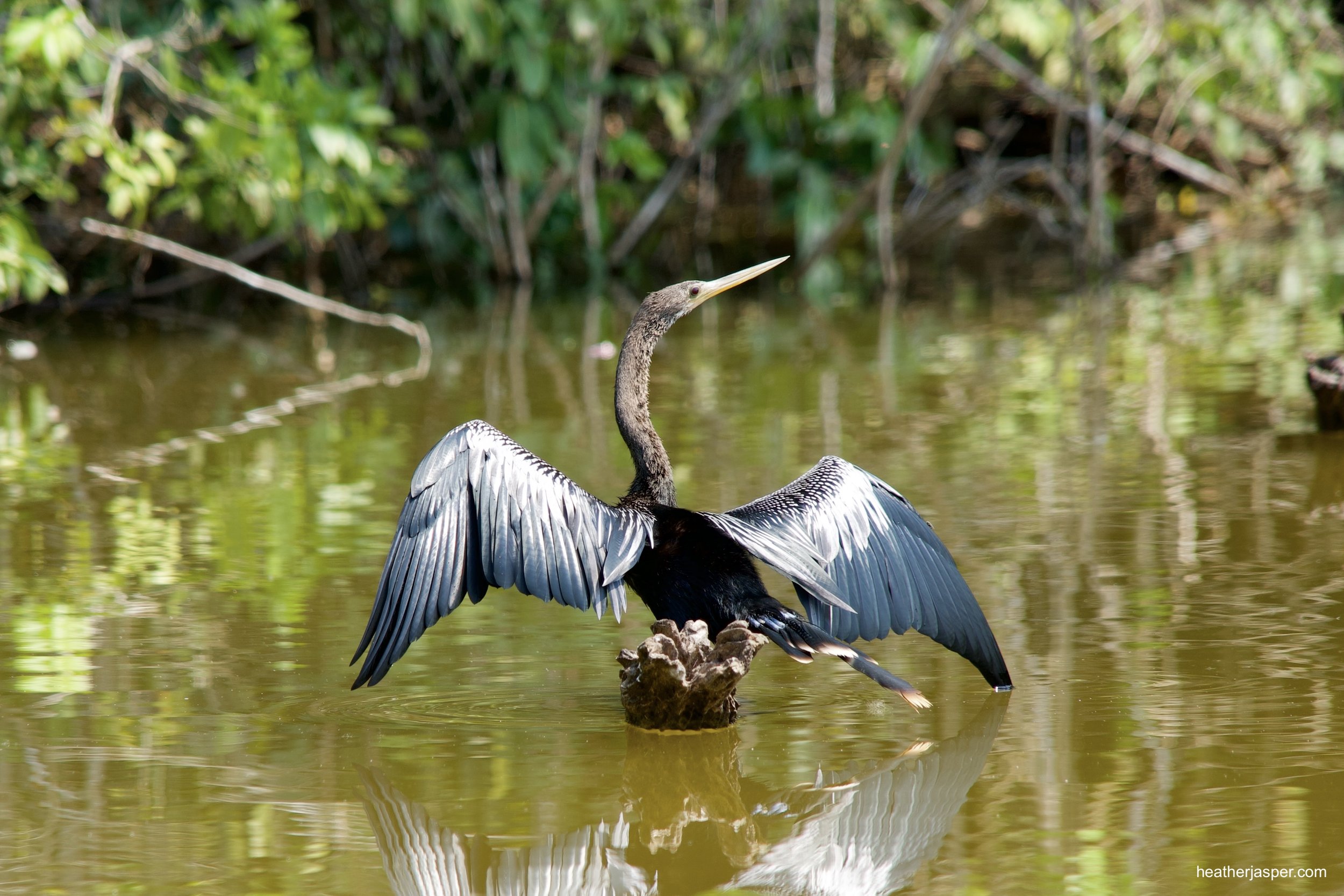

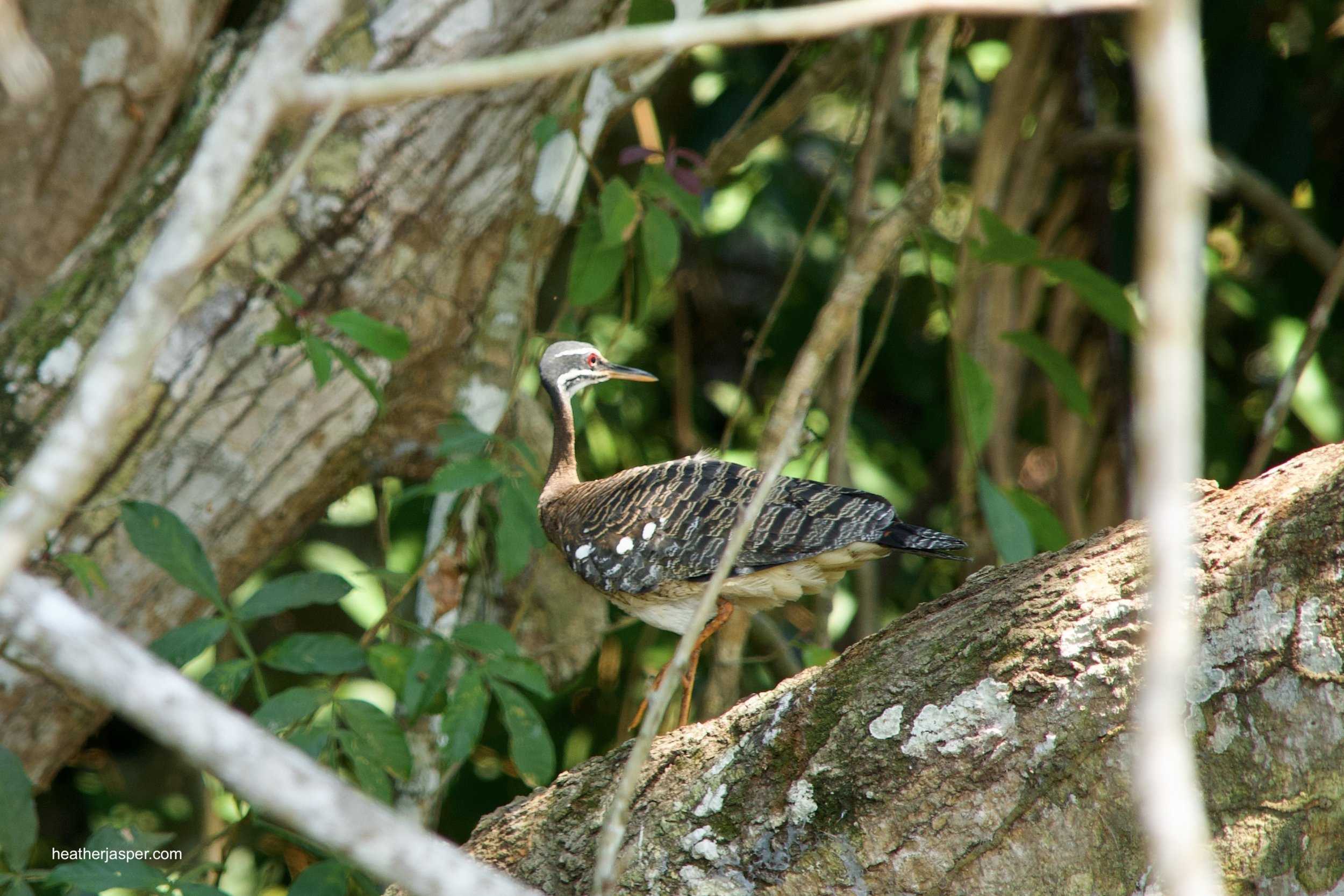
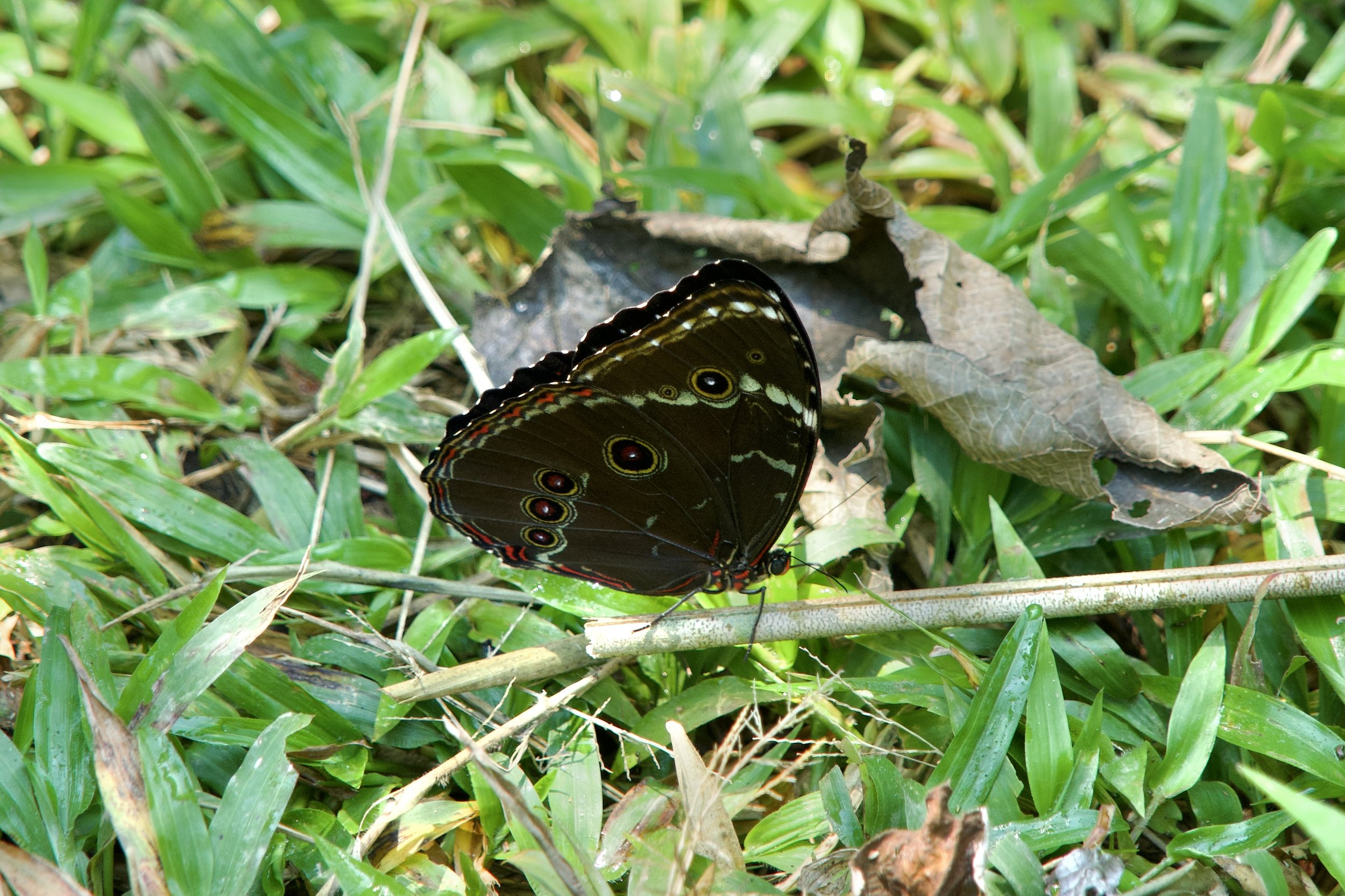
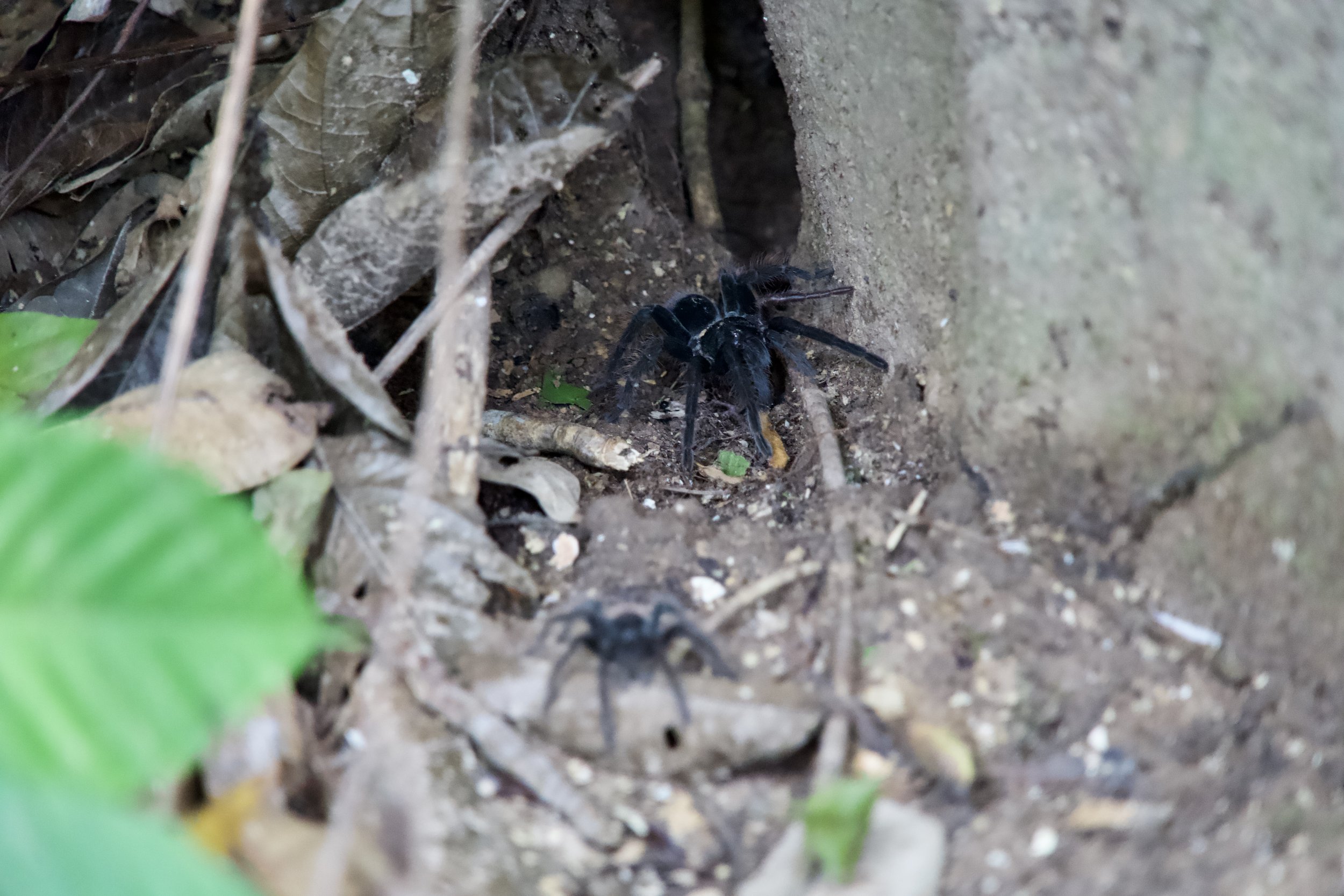
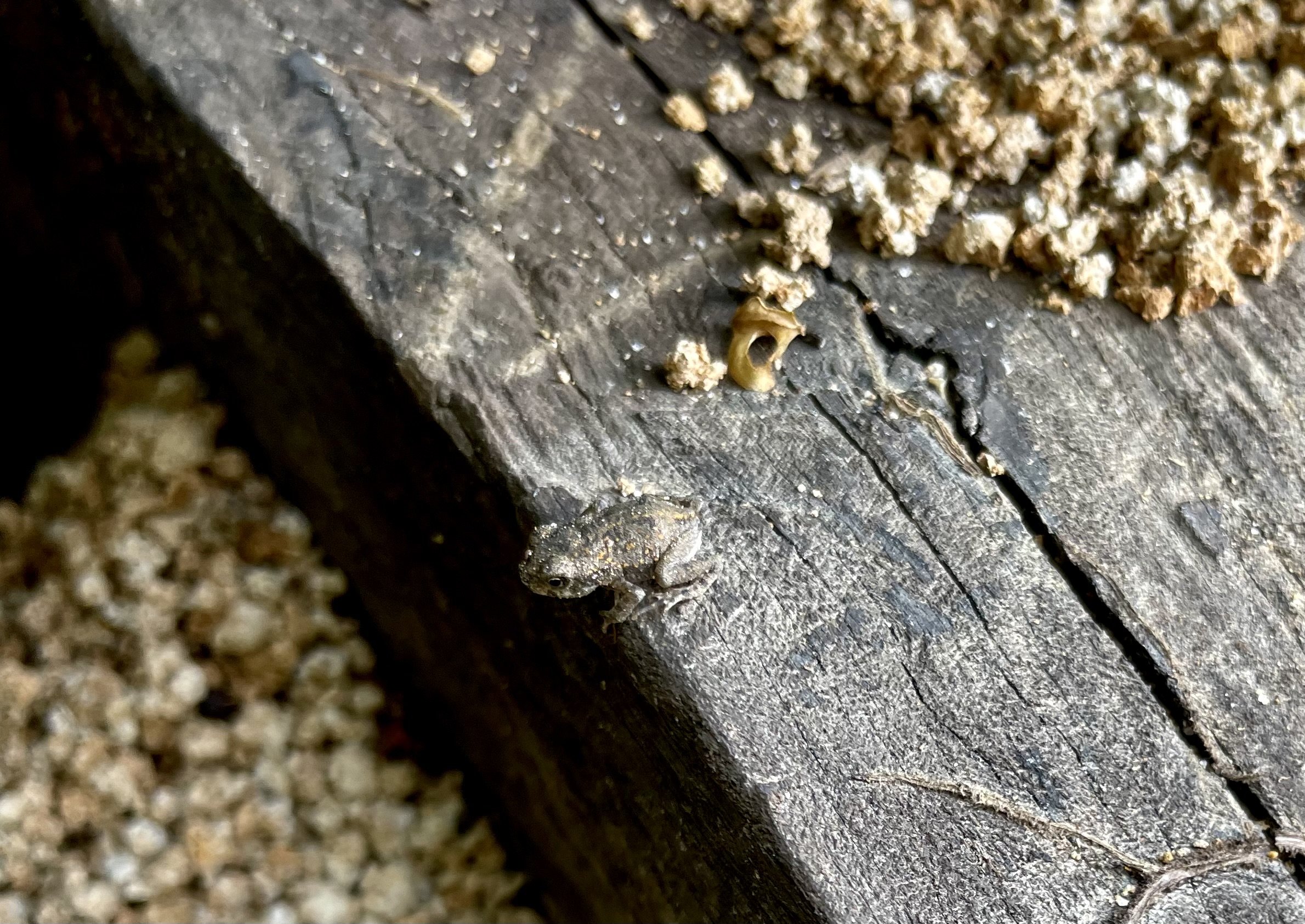
Sandoval Lake is the most popular tourist destination near Puerto Maldonado and for good reason.
If you only have a day, I recommend going early in the morning when wildlife are the most active. This does mean dragging yourself out of bed around 4am but it’s worth it. It takes about an hour to walk to the port and for the boat to get you to the trailhead. From there it’s another hour on a boardwalk to the lake. This is one of the few wheelchair accessible places in the Peruvian Amazon and the ranger station has wheelchairs available for those who didn’t bring their own.
If you have two days, do an overnight at any of the homestays around the lake. This is a great way to support local families who are devoting themselves to eco-tourism over logging and mining. It’s also the best way to see wildlife in the even and early morning.
Above are photos of giant otters, squirrel, capuchin and howler monkeys. The other mammal I saw, but didn’t get any good photos of was a red Amazonian squirrel. The giant otters are the biggest draw for Sandoval and the most elusive. You are guaranteed to see lots of monkeys and birds at the lake, but seeing otter needs luck and persistence. I saw a family of six, where four were obviously juveniles and two were clearly adults. Giant otter can be six feet long, plus the tale. The largest males can be eight feet long. They are loud and playful, like most otters.
My guide for Sandoval was Heiner with Tambopata Rainforest Tours, owned by Jony Valles. Call Jony at +51 982 704 736 or email ikerjony3@gmail.com
Yacumama Lake is the newest destination near Puerto Maldonado.
Just a few years ago, the families who live near Yacumama (which means anaconda) decided to try marketing their lake to tourists. The community is named St. Teresa and it charges tour agencies per person to rent boats and have access to the lake. It has been a resounding success, with three main draws: piranha fishing, bird watching and the sunset. I was prepared to be underwhelmed but came away quite impressed with all three.
The piranha that come out during the day are quite small, so don’t expect to be keeping the fish for dinner. Most of the fishing is catch and release. People bait their hooks with bit of meat and my group used chicken gizzard. I’m not much of a fisher, so I spent most of my time tossing chunks of chicken in the water and watching the piranha fight over them. It was highly entertaining.
It’s not easy to identify all of the macaws and parrots that come home to roost in the evening because of the failing light. They fly in noisily and pop down into the tops of dead palms where they nest. However, I did see Red-bellied Macaws, Chestnut-fronted Macaws and Dusky-headed Parakeets. I also saw two species of king fishers, White-throated Toucans, Muscovy Ducks and Red-capped Cardinals.
My guide for Yacumama was Aldair with Green House Tambopata, owned by Charlie Peña. Call Charlie at +51 972 704 291 or email informes@greenhousetambopata.com
Amazon Shelter
If you want to see wildlife up close, contact Amazon Shelter about volunteering with them. This is a legitimate shelter that is committed to rehabilitating wildlife for release as soon as possible. It is not a zoo, but you can arrange a visit. Check their website for more information.
I visited Amazon Shelter in 2022 and interviewed the founder and director Magali Salinas Bielich. This is a well run shelter that has partnerships with many other non-profits like the San Diego Zoo. Magali has a volunteer veterinarian on site at all times but they call San Diego Zoo veterinarians for help when animals have medical complications beyond what they’re used to seeing. I can vouch for Magali, your donations will be used effectively and frugally. Please donate today!
Here’s what Magali posted on their fundraiser page:
Amazon Shelter has been rescuing and rehabilitating wild animals in the Peruvian Amazon rainforest for over 17 years. Now we are receiving more young orphaned animals that need a dedicated centre. Many of the animals we receive are young primates, especially Howler Monkeys. Their health is often delicate and they need special care and attention 24 hours a day. Once they have survived the crucial first few months of rehabilitation they can be placed in groups ready for release in the future.
The nursery will be a crucial place to house all new young animals coming into our care and also those born in our centre who may need special attention at any given moment. We specialise in primates (mostly Red Howler Monkeys, Capuchins, Tamarinds, Squirrel Monkeys and Night monkeys) many of whom arrive underweight, sick, and with trauma. Most have been taken away from their mothers and raised as pets. When they arrive they need a safe and calm environment to begin their rehabilitation process. This is an essential part of their recovery.
This nursery will allow the babies to feel safe, to help us monitor them better and give them the proper care they need. Most importantly it will allow us to welcome in more animals in need and ensure their survival until they can be reintroduced into the wild.
The building, including all labour and materials costs $8,500.
Many thanks for your donation.
Magali and the Amazon Shelter Team








